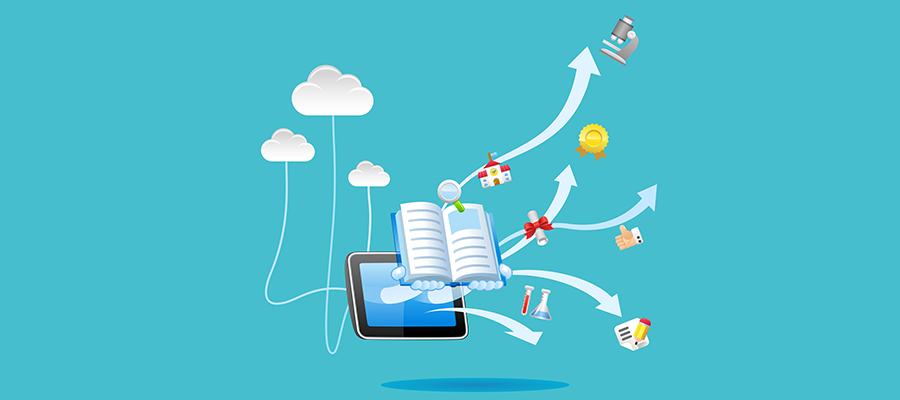Personalized learning is not new; just think of tutoring, which has been around for a long time. Today, however, thanks to Artificial Intelligence (AI), adaptive hypermedia research and the rise of big data, it has taken a distinctly high-tech, science-fiction-like turn. In its most sophisticated version, which can be described as “intelligent adaptive learning”, it generates in real time, for each learner, the most appropriate route to achieve their goals. Fascinating, isn’t it? Here are a few key points to uncover this promising learning method!
Natural evolution
Strong foundations. It has long been recognized that custom-made education has benefits that are not offered by the education aimed at everyone in an undifferentiated way. Indeed, personalized learning has taken many forms over time: from private tutoring, first documented in the 19th century, to computerized adaptive testing and differentiated pedagogy.
In the 1980s, Benjamin Bloom — the author of the famous pedagogical model known as Bloom’s taxonomy — noted that learners who received private lessons (alone with a tutor) were more positive and scored higher on exams, and studied for shorter periods of time (Bloom, 1984).
Modernized version: new purpose, new means. In essence, “first-generation” personalized training focused on determining what knowledge the learner needed to assimilate. Today’s personalized learning, which we can describe as “intelligent adaptive learning” — see below “Learning mode in (high!) definition” — is rather intended to help the learners achieve their goals by focusing on areas where the learners are weaker.
In its most modern form, this next-generation personalized learning is inextricably linked to computerized technologies. It is used not only to transmit content and evaluate the learner’s learning, but also to adapt to the learner according to his or her goals. This high-tech version can consider the learners’ knowledge, preferences, as well as their performance and the way they interact with the system. This customized training is also suitable for a wide range of learning situations, both academic and professional.
Learning mode in (high!) definition
Adaptive and intelligent systems. The nomenclature surrounding adaptive learning can be confusing, as this approach is based on principles that have been in use for a long time, but whose channels of delivery have been multiplied and technologically refined in recent years. As a result, those who speak today of the concept of “adaptive learning” do not always speak of the same reality. Here we will confine ourselves to the variant embodied in “adaptive and intelligent web-based educational systems”, as defined by Peter Brusilovsky, a pioneer in the field of adaptive learning, and Christoph Peylo in Adaptative and Intelligent Web-based Educational Systems.
These systems include “adaptive web-based learning systems” and “intelligent web-based learning systems.” In the first case, these are systems that “attempt to be different for different students and groups of students by taking into account information accumulated in the individual or group student models”. In the second case, we are talking about systems that apply techniques in the field of artificial intelligence (AI).
Complex technologies. By “adaptive” and “intelligent” technologies, Brusilovsky and Peylo essentially refer to “various ways of adding adaptive or intelligent functionality to a learning system.” They also note that several systems fall into both categories, being both adaptive and intelligent. In addition, the authors note that the line between an “intelligent” and a “non-intelligent” system can be a fine line….
It is in the light of these findings, and considering that in the more or less near future AI should articulate all of these systems of personalized learning, that we can agree to talk about this materialization of adaptive learning and use the term “intelligent adaptive learning” to designate the most promising version of this mode of learning.
Hypermodern components
Big data. In adaptive learning, big data come from a variety of sources: from the learner, who generates it on the training platform; from other learners who are taking the same training (but not the same path); and from any other relevant source, web-based or otherwise, that can inform and guide the training.
Algorithms. Big data are processed by algorithms, the “instructions” that a system must follow to achieve a certain result or to solve a problem (see Mini Glossary of Artificial Intelligence). These adaptive learning systems can be integrated with a variety of platforms that generate this data, including elearning, augmented reality, virtual reality, etc.
Web 2.0. The rise of Web 2.0 has contributed to the development of adaptive learning by broadening its possibilities for interaction and customization, particularly in elearning. The web has enabled the inclusion of a much wider variety of AI technologies.
Hypermedia. Hypermedia are those information presentation systems that enable links to be activated between text, sound and visual elements (text, video, graphics, etc.). They are based on models (components) that take into consideration user preferences. Their emergence has stimulated research on adaptive learning. After the classic linear hypermedia, where all users were offered the same links, the adaptive hypermedia was developed, which offers each user links based on some of their characteristics. The latest of these systems, dynamic adaptive hypermedia, is an adaptive hypermedia where the construction of the links is not predefined, being set up as they are executed.
Artificial Intelligence (AI). Artificial intelligence, especially deep learning, is what makes it possible to process big data. Deep learning is that branch of AI that lets the computer finds by itself the best way to solve a problem based on the data and indications of the expected result.
In education, this technology is embodied mainly in Intelligent Tutorial Systems (ITS), which are computer programs that are part of expert systems. ITS can decode the learner’s mental pathway from the way the learner solves problems to provide real-time explanations, advice and exercises that will be most beneficial to the learner. It is not only the course content that can be “intelligently” adapted for each learner, but also its presentation and navigation.







Leave A Comment